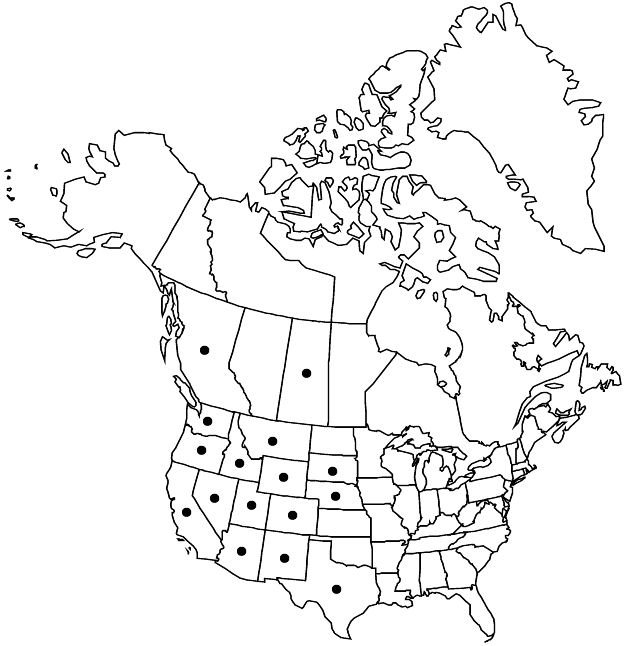Mentzelia albicaulis
Fl. N. Amer. 1: 534. 1840.
Plants wandlike or candelabra-form, (2–) 10–40 (–50) cm. Basal leaves persisting; petiole present or absent; blade linear-lanceolate to linear, margins deeply to shallowly lobed. Cauline leaves: petiole absent; blade ovatelanceolate to linear, to 15 cm, margins deeply to shallowly lobed or entire. Bracts green, ovate to linear, 3.7–8.6 × 0.8–3.9 mm, width 1/6–2/3 length, not concealing capsule, margins 3-lobed or entire, lateral lobes never prominent. Flowers: sepals 1–5 mm; petals orange proximally, yellow distally, 3–7 (–8) mm, apex usually acute, rarely retuse; stamens 20+, 3–5 mm, filaments monomorphic, filiform, unlobed; styles 2–5 mm. Capsules clavate, 8–28 (–35) × 1.5–3.5 mm, longest capsules usually 15+ mm, axillary curved to 180° at maturity, usually inconspicuously longitudinally ribbed. Seeds 10–30, in 2+ rows distal to mid fruit, dark-brown or tan, moderately to densely dark-mottled, usually irregularly polygonal, occasionally triangular prisms proximal to mid fruit, surface tuberculate under 10× magnification; recurved flap over hilum absent; seed-coat cell outer periclinal wall domed, domes on seed edges more than 1/2 as tall as wide at maturity. 2n = 54, 72.
Phenology: Flowering Mar–Aug.
Habitat: Sand dunes, gravel fans, washes, desert scrub, sagebrush or antelope bitterbrush scrub, open ponderosa pine woodlands, pinyon/juniper woodlands.
Elevation: 0–2300 m.
Distribution

B.C., Sask., Ariz., Calif., Colo., Idaho, Mont., Nebr., Nev., N.Mex., Oreg., S.Dak., Tex., Utah, Wash., Wyo., Mexico (Baja California), Mexico (Chihuahua), Mexico (Sonora)
Discussion
Mentzelia albicaulis is the most widespread species in sect. Trachyphytum and exhibits extensive morphological variation. Most populations of M. albicaulis are octoploid; however, hexaploids from southern California that have been called M. mojavensis and occasionally M. californica are also treated here as M. albicaulis. Two tetraploids in sect. Trachyphytum, M. montana and M. obscura, also have been treated previously as M. albicaulis (N. H. Holmgren et al. 2005). Both exhibit morphological forms and distributions overlapping with M. albicaulis. However, in most cases these species can be distinguished without chromosome counts, and their distinctiveness has been supported by phylogenetic analyses (J. M. Brokaw and L. Hufford 2010b).
Selected References
None.
Lower Taxa
"not elongating" is not a number.